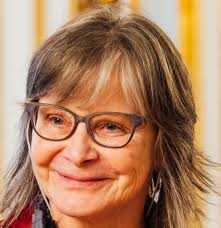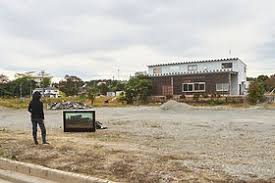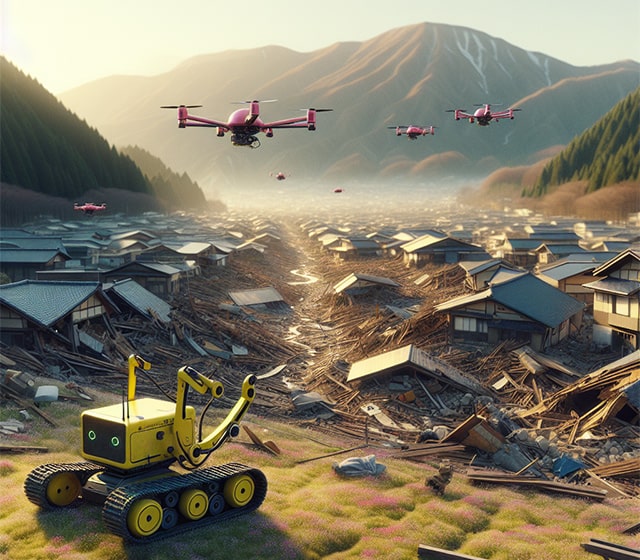Willkommen auf der Seite der "Textinitiative Fukushima"
Die Seiten der Textinitiative Fukushima werden derzeit von der Japanologie der Goethe-Universität betrieben. Gegenwärtiges Anliegen von TIF ist die zeitgeschichtliche Dokumentation. Das Forum dient nun in erster Linie als Archiv für Informationen zu 3/11 sowie allgemein zur Geschichte des Atomaren. Die Suchfunktion ermöglicht Recherchen zu Stichworten, Inhalten und Akteuren.
| VORTRAG Steffi Richter: "Unsichtbares sichtbar machen. ‚The Maruki Gallery For The Hiroshima Panels'“ am 4. Dezember 2025 im Museum Fünf Kontinente / München | 20.10.2025 |
4. Dezember 2025: 18 Uhr Links: https://www.blog.japan.uni-muenchen.de/event/vortrag-von-prof-dr-steffi-richter |
|
| Kunst nach Fukushima: "Art of the Soil: Reflections of Nuclear Disaster in Post-Fukushima Japanese Art" von Max C. Gerlach (2024) | 16.10.2025 |
"I would like to briefly outline the core interpretive assertions associated with each analytical section of my paper. Beginning with art from the postwar era, I explore how Japanese artists use their work surrounding the atomic bomb to convey themes such as that of hope for recovery and for a peaceful future. While artists from the postwar era undoubtedly worked to represent and memorialize the suffering of atomic bomb victims, there remains an underlying depiction in their artwork of a Japanese society that comes together in the face of nuclear disaster and forges toward a peaceful tomorrow. Moving into post-Fukushima art as representation, my findings indicate a thematic shift away from hope and peace and instead toward a nuanced depiction of the disparity between the corporations responsible for nuclear power plant disasters and the rural communities most affected by them. While Japanese society’s ability to come together in the face of nuclear disaster remains a common theme, post-Fukushima art as representation explores the ways in which rural communities have been disproportionately affected by the disaster, pulling away from the idea of a totally unified front. Finally, my analysis of post-Fukushima art as protest demonstrates the most drastic shift away from themes found in postwar nuclear disaster-related art. Themes in this section implicate Japanese society itself as an agent of the Fukushima nuclear disaster. While protest-art from both the postwar era and the post-Fukushima era points an accusatory finger at the government and big corporations, post-Fukushima work suggests that Japanese society is complicit in creating the socio-political environment in which the Fukushima meltdown could happen. This thematic evolution is not only a reflection of a changing artistic tradition in Japan, but it also reflects a changing Japanese society. Leaning on Connerton’s definition of collective memory, I claim that changing themes in nuclear disaster-related art reflects how Japanese society is more acutely aware of the disparate plight of rural communities living around nuclear power plants and of its own responsibility for nuclear disaster than it was before Fukushima." (Max C. Gerlach, University of Vermont, 2024) Link: https://scholarworks.uvm.edu/hcoltheses/639/ |
|
| Rückblick: Kunst in der Sperrzone - Koizumi Meiros 小泉明郎 "Home Drama" (2022) | 15.10.2025 |
"Consistent with Koizumi’s oeuvre, the work teases and troubles the boundaries between private experience and wider social phenomena – in this case, the effects of the ongoing nuclear disaster and resulting displacement on private, domestic life and its exposure to the public as artwork." "Mr Y imagines and acts out a conversation he and his wife might have had over their first dinner after returning to Futaba. His delivery, slow, relaxed and in a Northeastern drawl, is disarming and unaffected. The conversation goes something like this: “I’m home. I’m home. I’m home.” As they talk (or as he imagines they’d talk), he presciently surmises that any return to their home in this town devastated by nuclear disaster will be complex." Links: https://artreview.com/art-in-the-fukushima-exclusion-zone/
|
|
| VERANSTALTUNG an der San José State University: "Hope with Hiroshima: How can we achieve a world without nuclear threats?" | 14.10.2025 |
"The award of the 2024 Nobel Peace Prize given to Nihon Hidankyo (a group of Atomic- and Hydrogen-Bomb sufferers) is sounding a loud alarm for the world about the imminent threats of nuclear weapons in the current world. Let us think of what we can do for the world without nuclear weapons. The program includes: Student Union Theater Courtyard ------------------------------ (https://de.wikipedia.org/wiki/Nihon_Hidankyō) |
|
| FUKUSHIMA Think Tank F-REI | 06.10.2025 |
"The Fukushima Institute for Research, Education and Innovation (commonly known as F-REI) is a special corporation established on April 1, 2023 under the Act on Special Measures for the Reconstruction and Revitalization of Fukushima. In addition to providing dreams and hopes for realizing the reconstruction of Fukushima and other prefectures in the Tohoku region, F-REI aims to become a world-renowned “central institute for creative reconstruction” which drives forward with enhancing the scientific capabilities, technological capabilities and industrial competitiveness of Japan and contributes to economic growth and improvement to the daily lives of people living in Japan."
|
|
|
1-5 von 801
|
 "Mit ihrer Eröffnung im Jahr 1967 unweit von Tokyo wurde die Maruki-Galerie Heimstatt für die als Genbaku no zu 『原爆の図』(Hiroshima Panels) bekannt gewordenen Wandbilder des Künstlerpaars Maruki (Maruki Iri/1901-1995 und Maruki Toshi/1912-2000). Die ersten sieben des insgesamt fünfzehn Gemälde umfassenden Zyklus, der zwischen 1950 und 1982 entstand, thematisieren unmittelbar die Opfer der über Hiroshima abgeworfenen Atombombe. Noch unter den Bedingungen der US-amerikanischen Besatzung und Zensur gingen die Künstler mit den Bildern zunächst in Japan selbst auf Wanderschaft, zeigten Millionen von Ausstellungsbesuchern erstmals das von den Bomben verursachte menschliche Leid. Auf ihren 1953 beginnenden Reisen in zahlreiche Länder der Welt wurden beide Künstler auch international wichtige Akteure der Friedens- und Anti-Atomkriegsbewegung. (...)"
"Mit ihrer Eröffnung im Jahr 1967 unweit von Tokyo wurde die Maruki-Galerie Heimstatt für die als Genbaku no zu 『原爆の図』(Hiroshima Panels) bekannt gewordenen Wandbilder des Künstlerpaars Maruki (Maruki Iri/1901-1995 und Maruki Toshi/1912-2000). Die ersten sieben des insgesamt fünfzehn Gemälde umfassenden Zyklus, der zwischen 1950 und 1982 entstand, thematisieren unmittelbar die Opfer der über Hiroshima abgeworfenen Atombombe. Noch unter den Bedingungen der US-amerikanischen Besatzung und Zensur gingen die Künstler mit den Bildern zunächst in Japan selbst auf Wanderschaft, zeigten Millionen von Ausstellungsbesuchern erstmals das von den Bomben verursachte menschliche Leid. Auf ihren 1953 beginnenden Reisen in zahlreiche Länder der Welt wurden beide Künstler auch international wichtige Akteure der Friedens- und Anti-Atomkriegsbewegung. (...)"
